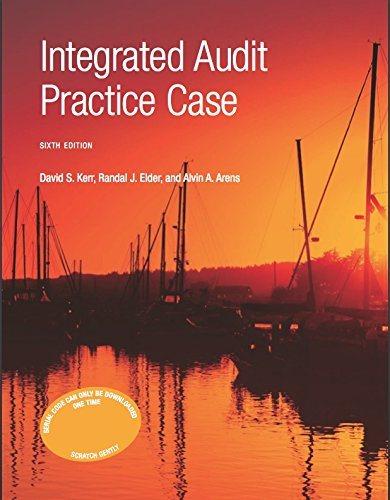Question
Hi, I'm just really lost on where to start and would really appreciate a step-by-step solution. Thanks Lehighton Chalk Company manufactures sidewalk chalk, which it
Hi, I'm just really lost on where to start and would really appreciate a step-by-step solution. Thanks
Lehighton Chalk Company manufactures sidewalk chalk, which it sells online by the box at $22 per unit. Lehighton uses an actual costing system, which means that the actual costs of direct material, direct labor, and manufacturing overhead are entered into work-in-process inventory. The actual application rate for manufacturing overhead is computed each year; actual manufacturing overhead is divided by actual production (in units) to compute the application rate. Information for Lehighton's first two years of operation is as follows:
| Years 1 | Year 2 | |
| Sales (in units) | 2,400 | 2,400 |
| Production (in units) | 3,000 | 1,800 |
| Production Costs: | ||
| Variable manufacturing costs | 11,100 | 6,660 |
| Fixed manufacturing overhead | 14,100 | 14,100 |
| Selling and administrative costs: | ||
| Variable | 9,600 | 9,600 |
| Fixed | 8,600 | 8,600 |
Selected information from Lehighton's year-end balance sheets for its first two years of operation is as follows:
| Based on absorption costing | End of Year 1 | End of Year 2 |
| Finished-Goods Inventory | 5,040 | 0 |
| Retained earnings | 8,940 | 15,040 |
| Based on variable costing | End of Year 1 | End of Year 2 |
| Finished-goods inventory | 2,220 | 0 |
| Retained Earnings | 6,120 | 15,040 |
1. Reconcile Lehighton's operating income reported under absorption and variable, during each year, by comparing the following two amounts on each income statement:
- Costs of goods sold
- Fixed cost (expensed as a period expense)
2. What was Lehighton's total operating income across both years under absorption costing and under variable costing?
3. What was the total sales revenue across both years under absorption costing and under variable costing?
4. What was the total of all costs expensed on the operating income statements across both years under absorption costing and under variable costing?
5. Subtract the total costs expensed across both years [requirement (4)] from the total sales revenue across both years [requirement (3)]: (a) under absorption costing and (b) under variable costing.
Step by Step Solution
There are 3 Steps involved in it
Step: 1

Get Instant Access to Expert-Tailored Solutions
See step-by-step solutions with expert insights and AI powered tools for academic success
Step: 2

Step: 3

Ace Your Homework with AI
Get the answers you need in no time with our AI-driven, step-by-step assistance
Get Started


